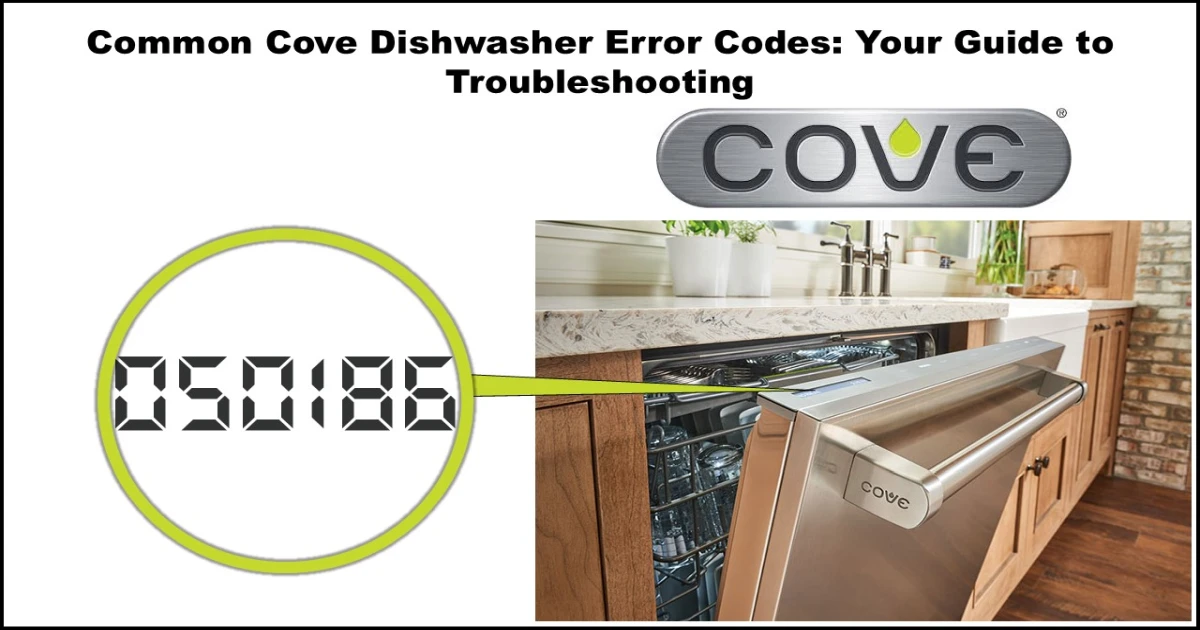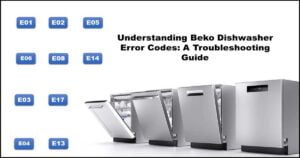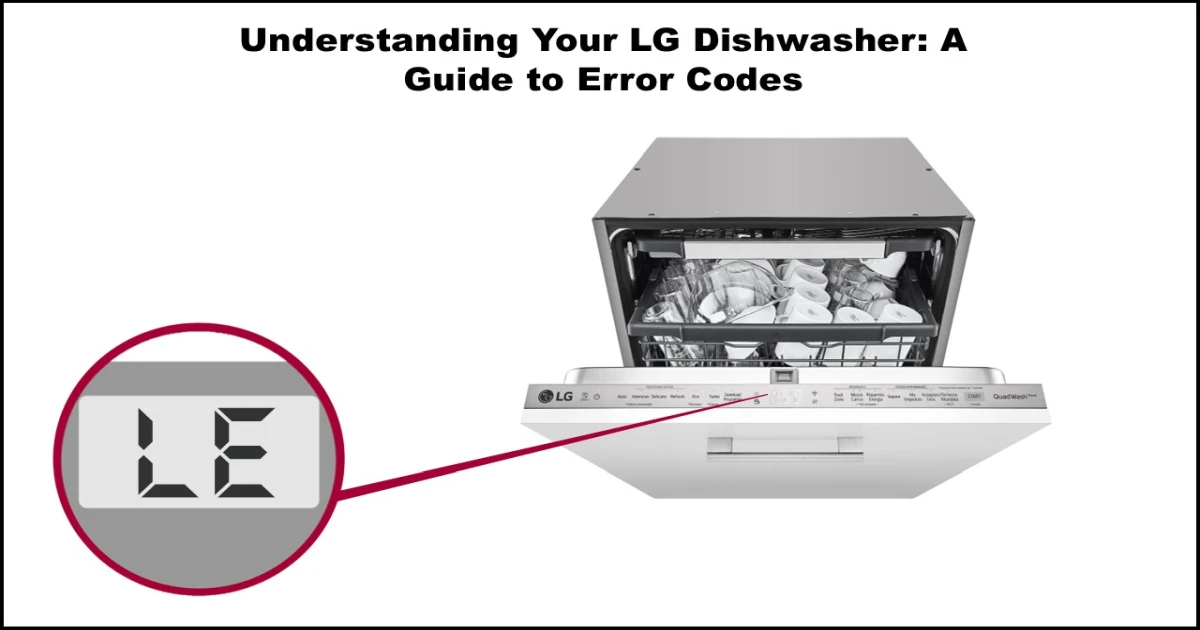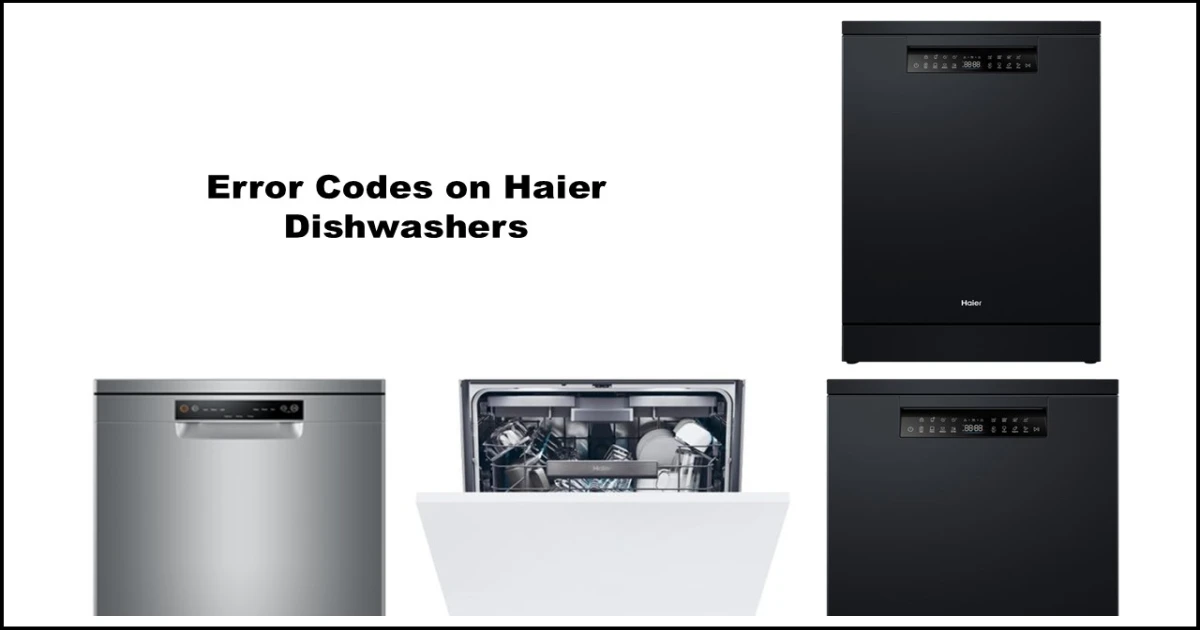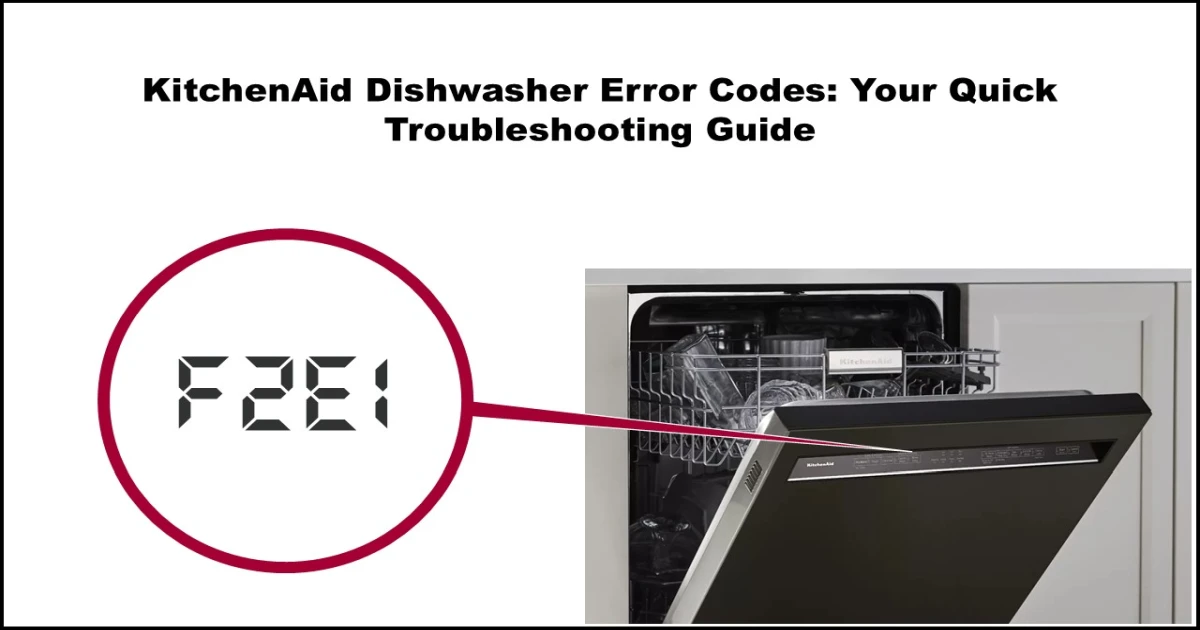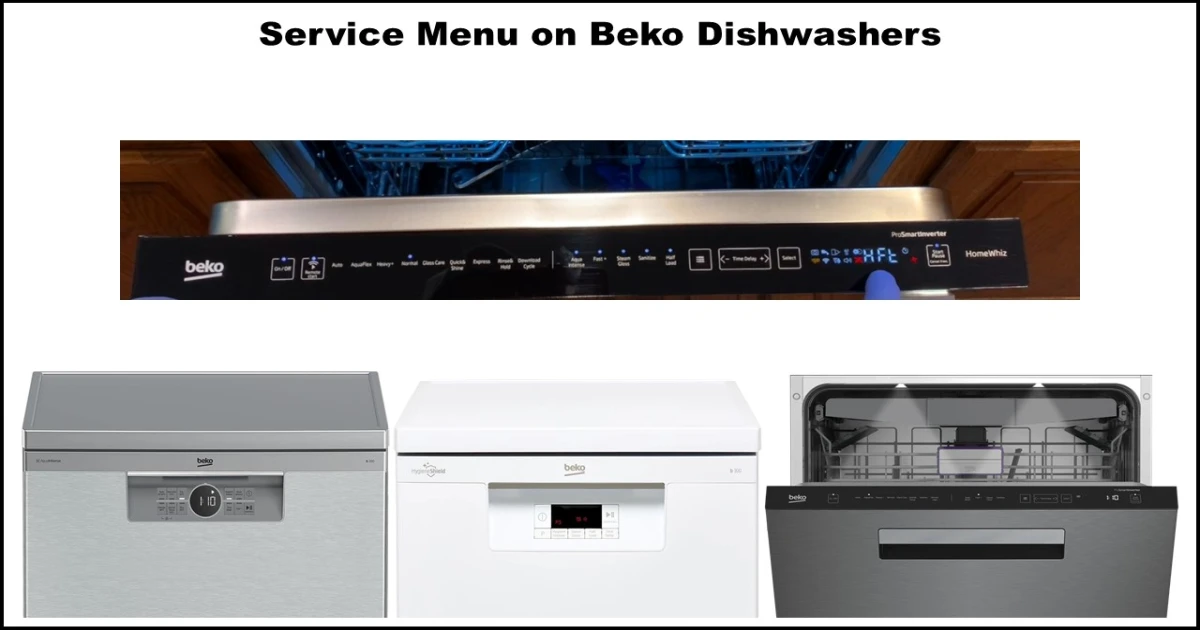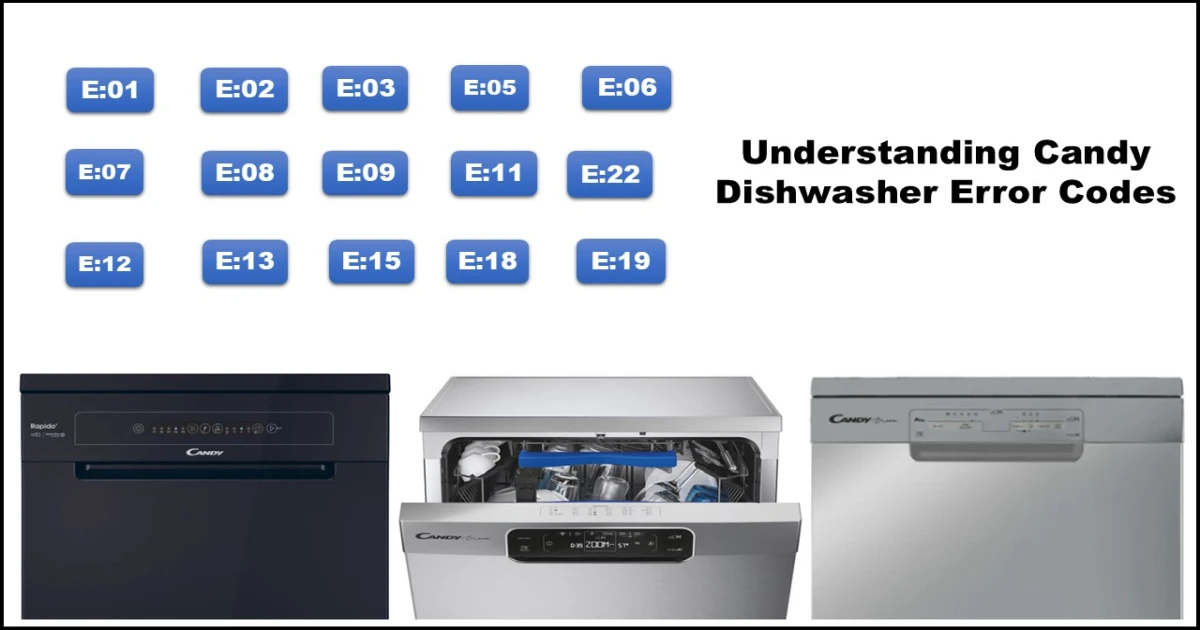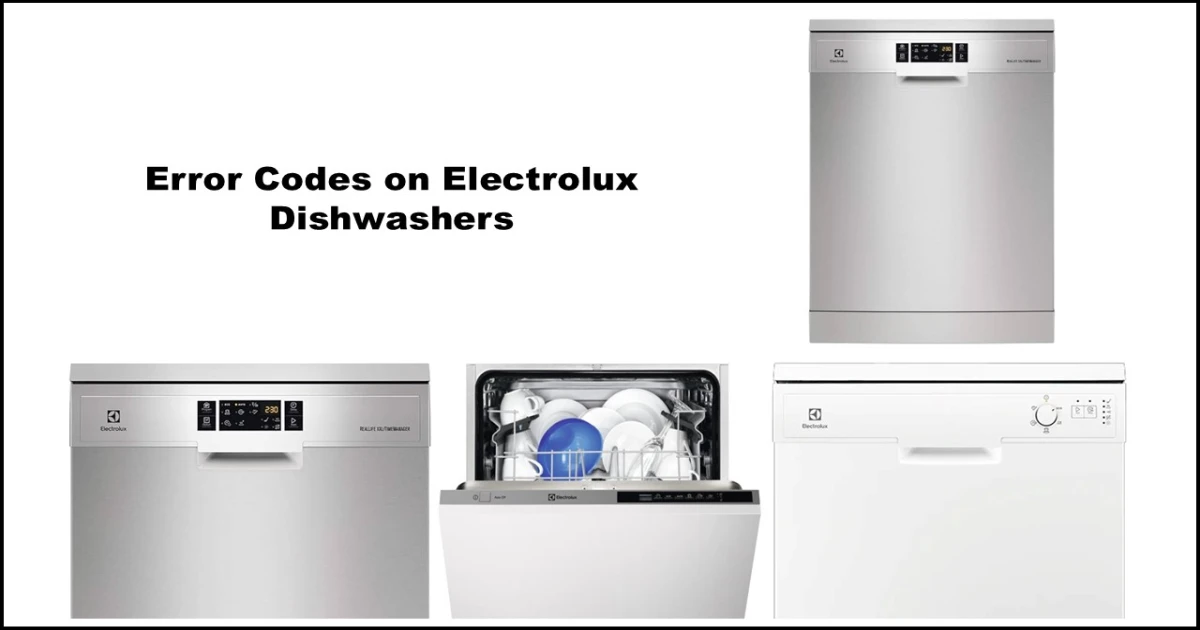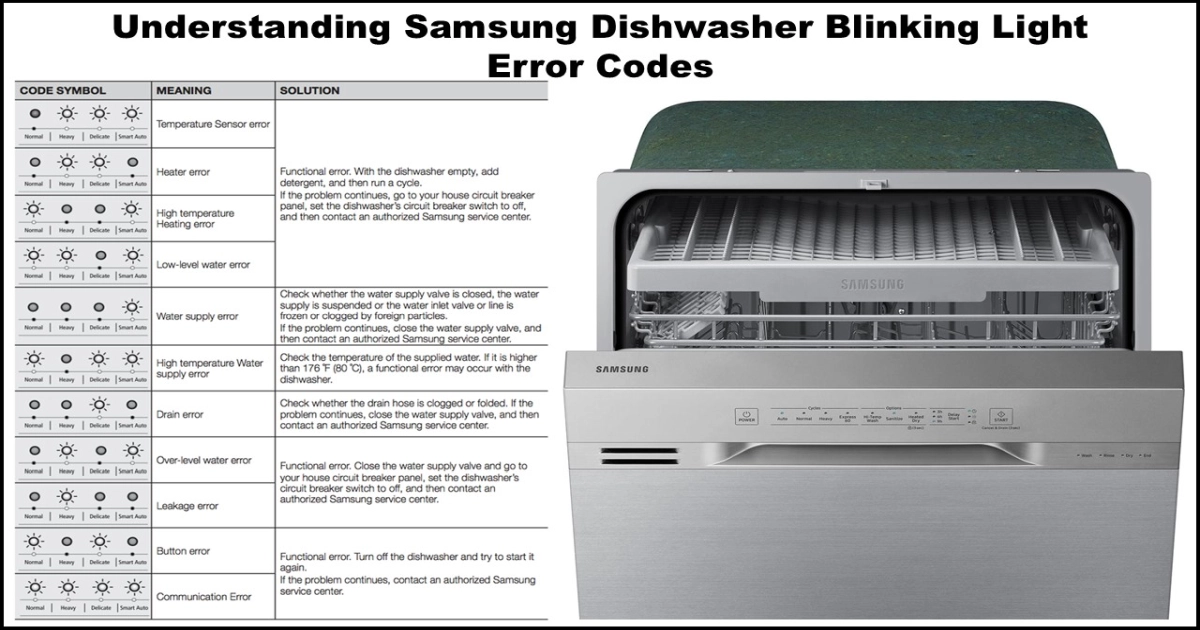Hoover Dishwasher Error Codes: A Comprehensive Troubleshooting Guide
Hoover dishwashers, like any modern appliance, can sometimes display error codes indicating a fault or issue. These codes are designed to help you identify the problem, making troubleshooting and repair easier. This article provides a detailed guide to common Hoover dishwasher error codes, their meanings, and potential solutions.
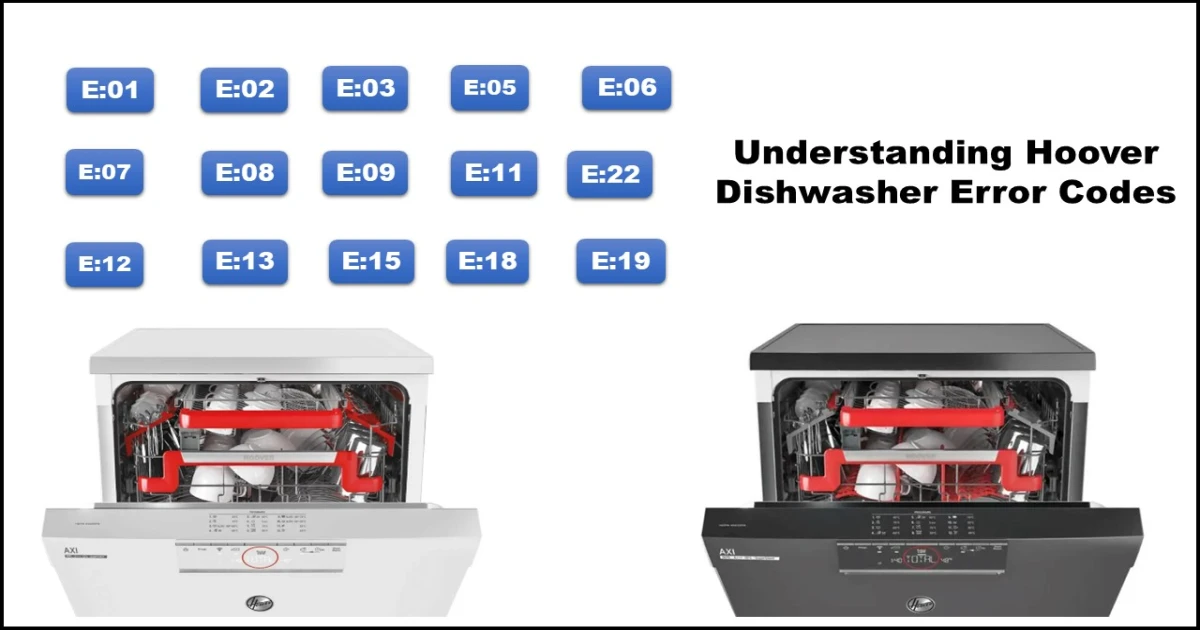
Important Safety Precautions:
- Always unplug the dishwasher from the power outlet before attempting any inspection or repair.
- Turn off the water supply to the dishwasher.
- If you are not comfortable performing any of the troubleshooting steps, or if the issue persists, it is recommended to contact a qualified appliance technician.
- Be cautious of sharp edges and electrical components when accessing the interior of the dishwasher.
Understanding Hoover Dishwasher Error Codes
Hoover dishwasher error codes typically appear as a combination of letters and numbers on the display panel. While the exact codes and their meanings can vary slightly depending on the specific model, the following list covers the most common errors:
E:02 or E2: Water Fill Error
This error indicates that the dishwasher is not filling with water, or the water intake is too slow.
Possible Causes and Solutions:
- Insufficient Water Pressure:
- Ensure the water supply tap is fully open.
- Check if other taps in the house have adequate water pressure.
- Blocked Inlet Hose or Filter:
- Turn off the water supply and disconnect the inlet hose from the tap and the dishwasher.
- Check the hose for kinks or blockages.
- Inspect and clean the small filter located at the dishwasher connection end of the inlet hose.
- Faulty Water Inlet Valve:
- This valve controls the flow of water into the dishwasher. If it’s faulty, it may not open correctly.
- Check the resistance with a multimeter (~3.90 KΩ). If you are not familiar with using a multimeter or testing electrical components, it’s best to call a technician.
- Problem with the Main Control Board:
- If the above steps do not resolve the issue, there might be a problem with the main PCB (Printed Circuit Board) that controls the filling process. This usually requires professional diagnosis and replacement.
E:03 or E3: Drain Pump Error
This error signifies that the dishwasher is not draining the water properly or within the expected time.
Possible Causes and Solutions:
- Blocked Drain Hose or Filter:
- Check the drain hose for kinks, twists, or blockages.
- Clean the dishwasher’s internal filters, including the main filter at the bottom of the wash cavity and any other accessible filters.
- Ensure the connection to the household drain is not blocked.
- Faulty Drain Pump:
- The drain pump is responsible for expelling the water. If it’s faulty, it won’t be able to drain the machine.
- Check the pump resistance (~190 Ω). Again, use a multimeter with caution or consult a technician.
- Issue with the Pressure Switch:
- The pressure switch monitors the water level. If it’s faulty, it might not signal the pump to drain correctly.
- Problem with the Main Control Board:
- If other checks fail, the main PCB might be the culprit.
E:04 or E4: Water Leakage Detected
This error is triggered by the anti-flood system, indicating the presence of excess water in the base of the dishwasher.
Possible Causes and Solutions:
- Water Leak Source:
- Carefully inspect the interior of the dishwasher, hoses, and connections for any visible signs of water leakage.
- Check the door seal for damage or debris that might be preventing a proper seal.
- Examine the pump area and heating element for leaks.
- Tighten any loose hose connections.
- Faulty Anti-Flood Switch:
- The anti-flood switch (sometimes a float switch) is located in the base of the dishwasher. If it’s stuck or faulty, it can trigger the error even if there is no actual leak.
- Problem with the Drain Pump:
- While E03 specifically relates to draining time, a partially blocked or weak drain pump might lead to water accumulating in the base, eventually triggering the E04 error. Test the drain pump as described for E03.
- Faulty Main Control Board:
- In rare cases, a malfunctioning main board can cause a false E04 error.
E:05 or E5: NTC Sensor Error
This error indicates a problem with the NTC (Negative Temperature Coefficient) sensor, which measures the water temperature inside the dishwasher.
Possible Causes and Solutions:
- Faulty NTC Sensor:
- The sensor itself may be defective and providing incorrect temperature readings.
- Resistance chart (20°C ~ 12580 Ω, 60°C ~ 2390 Ω). If you can access the sensor and have a multimeter, you can test its resistance at different temperatures.
- Wiring Issue:
- Check the wiring harness and connections between the NTC sensor and the main control board for any damage or loose connections.
- Problem with the Main Control Board:
- If the sensor and wiring are intact, the issue might lie with the main PCB’s ability to read the sensor data.
E:07 or E7: Washing Motor Pump Error
This error points to a problem with the motor that circulates water through the spray arms during the wash cycle.
Possible Causes and Solutions:
- Faulty Wash Motor:
- The motor itself may be burned out or malfunctioning.
- Check the resistance of the asynchronous washing motor (~118 Ω).
- Problem with the Motor Capacitor:
- The capacitor helps start and run the motor. If it’s faulty, the motor may not run or run weakly.
- Check the capacitance (~5 µF).
- Faulty Tachometer:
- The tachometer monitors the motor’s speed. A fault here can lead to an E07 error.
- Check the tachometer resistance (~153 Ω).
- Wiring Issue:
- Check the wiring between the wash motor and the main control board.
- Problem with the Main Control Board:
- The main board controls the motor’s operation and can be the source of the error.
E:08 or E8: Abnormal Heating Temperature
This error indicates that the dishwasher is not reaching or maintaining the correct water temperature for the selected cycle.
Possible Causes and Solutions:
- Faulty Heating Element:
- The heating element is responsible for warming the water. If it’s burned out, the water won’t heat.
- Resistance value for a 1850-watt heater (~26 Ω).
- Problem with the NTC Sensor:
- An inaccurate temperature reading from the NTC sensor (E05) can also lead to heating issues and potentially an E08 error.
- Faulty Pressure Switch:
- The pressure switch confirms that there is enough water in the tub before allowing the heater to activate. If it’s faulty, the heater might not turn on.
- Check the pressure switch resistance with and without water.
- Wiring Issue:
- Check the wiring to the heating element and the pressure switch.
- Faulty Heating Relay:
- The relay on the main board switches power to the heating element. If it’s faulty, the heater won’t receive power.
- Problem with the Main Control Board:
- The main board manages the heating process and can be the source of the error.
E:09 or E9: Turbidity Sensor Error
This error relates to the turbidity sensor, which measures how dirty the water is to adjust the cycle length and intensity.
Possible Causes and Solutions:
- Dirty Turbidity Sensor:
- Food particles or debris can accumulate on the sensor, affecting its reading. Clean the sensor according to your dishwasher’s manual.
- Excessive Foam:
- Using too much detergent or the wrong type of detergent can create excessive foam, interfering with the sensor. Run a cycle without detergent or with a dishwasher cleaner.
- Wiring Issue:
- Check the wiring between the turbidity sensor and the main control board.
- Faulty Turbidity Sensor:
- The sensor itself may be faulty and require replacement.
- Problem with the Main Control Board:
- The main board processes the sensor’s signal and can be the source of the error.
E:10 or E10: Communication Error
This error indicates a loss of communication between the main control board and the user interface or display panel.
Possible Causes and Solutions:
- Loose or Damaged Wiring:
- Check the wiring harness connecting the main board and the user interface for any loose plugs or damaged wires.
- Faulty User Interface:
- The control panel itself might be malfunctioning and unable to communicate with the main board.
- Faulty Main Control Board:
- The main board’s communication module could be defective.
E:12 or E12: BLDC Washing Motor Error
This error specifically applies to models equipped with a Brushless DC (BLDC) wash motor and indicates a problem with this motor.
Possible Causes and Solutions:
- Faulty BLDC Motor:
- The BLDC motor may have an internal fault.
- Check the resistance between the windings (~62 Ω between U and V, V and W, W and U). This requires a multimeter and knowledge of motor testing.
- Wiring Issue:
- Check the wiring harness connecting the main PCB and the BLDC motor.
- Problem with the Main Control Board:
- The main board controls the BLDC motor, and a fault on the board can trigger this error.
E:14 or E14: Heating Chain Error
This error suggests a problem within the circuit responsible for heating the water. It can be related to several components in the heating path.
Possible Causes and Solutions:
- Faulty Heating Element:
- As with E08, the heating element is a key part of the heating chain.
- Faulty NTC Sensor:
- An incorrect temperature reading can affect the heating process.
- Faulty Pressure Switch:
- If the pressure switch doesn’t correctly detect the water level, the heater might not operate.
- Faulty Heating Relay:
- A problem with the relay that powers the heater.
- Wiring Issue:
- Check the wiring connecting all components in the heating circuit.
- Problem with the Main Control Board:
- The main board oversees the entire heating chain.
E:15 or E15: EEPROM Error
This error indicates that the EEPROM (Electrically Erasable Programmable Read-Only Memory) on the main control board is corrupted. The EEPROM stores program data and settings.
Possible Causes and Solutions:
- Corrupted EEPROM Data:
- This can sometimes happen due to power surges or electrical fluctuations.
- Faulty Main Control Board:
- The EEPROM is part of the main PCB, and if it’s corrupted, the entire board usually needs replacement.
E:16 or E16: Pressure Switch Shorted
This error specifically means the pressure safety microswitch, which is part of the anti-flood system, is stuck in the “closed” position, indicating a constant high water level.
Possible Causes and Solutions:
- Faulty Pressure Safety Microswitch:
- The switch itself may be physically stuck or electrically faulty.
- Wiring Issue:
- Check the wiring connected to the microswitch for any short circuits or damage.
- Problem with the Heater Relay:
- In some models, there might be an interaction between the pressure switch and the heater relay that could trigger this error.
- Faulty Main Control Board:
- The main board interprets the signal from the pressure switch, and a fault on the board could lead to a false error.
E:17 or E17: Heater Relay Error
This error indicates a problem with the relay on the main control board that controls the heating element. It can sometimes be caused by a software issue.
Possible Causes and Solutions:
- Faulty Heater Relay:
- The relay itself may be defective and not properly switching power to the heater.
- Software Issue:
- There might be a temporary software glitch. Unplugging the dishwasher for at least 20 minutes can sometimes reset the system and clear this error.
- Problem with the Main Control Board:
- If the error persists after a power reset, the main PCB likely needs to be replaced.
E:18 or E18: Water Level Error
This error signifies that the dishwasher detected an incorrect or abnormal water level during the filling process.
Possible Causes and Solutions:
- Faulty Water Inlet Valve:
- If the valve is not closing properly, it can lead to overfilling.
- Blocked Air Trap Chamber:
- The air trap chamber is connected to the pressure switch and helps measure the water level. If it’s blocked, the pressure switch will get an incorrect reading. Clean the air trap chamber.
- Air Leak in Pressure Switch Hose:
- A leak in the hose connecting the air trap chamber to the pressure switch can also cause inaccurate water level detection. Inspect the hose for damage or loose connections.
- Faulty Pressure Level Switch:
- The pressure switch that monitors the water level may be faulty.
- Problem with the Main Control Board:
- The main board processes the water level information and can be the source of the error.
E:21 or E21: Flowmeter Error
This error indicates a problem with the flowmeter, a component that measures the amount of water entering the dishwasher.
Possible Causes and Solutions:
- Faulty Flowmeter (Reed Switch):
- The flowmeter usually contains a reed switch that is activated by a magnet on a rotating turbine as water flows through.
- Blockage in the Water Inlet Path (after the solenoid valve and before the flowmeter):
- Debris can sometimes impede the flow of water through the flowmeter.
- Wiring Issue:
- Check the wiring between the flowmeter and the main control board.
- Faulty Main Control Board:
- The main board interprets the flowmeter’s signal.
General Troubleshooting Tips (Applicable to various issues)
Even without a specific error code, you might encounter common dishwasher problems. Here are some general troubleshooting steps:
- Dishwasher Not Starting:
- Check if the dishwasher is properly plugged in and the power switch is on.
- Ensure the door is securely latched.
- Check your household’s circuit breaker or fuse box.
- Poor Cleaning Results:
- Ensure you are loading the dishwasher correctly, not overcrowding it.
- Check that the spray arms are not blocked by dishes and can rotate freely.
- Clean the filters.
- Use the correct amount and type of detergent.
- Check the water temperature (refer to your manual for the recommended temperature).
- Dishwasher is Noisy:
- Check for foreign objects (like cutlery) that might have fallen into the pump area or are hitting the spray arms.
- Ensure the dishwasher is level.
- Cloudy Glassware:
- This can be caused by hard water. Ensure you are using rinse aid and that the salt reservoir (if applicable) is filled.
Conclusion
While encountering a Hoover dishwasher error code can be inconvenient, understanding the potential causes and solutions can help you address the issue effectively. Remember to prioritize safety by disconnecting the power and water supply before any inspection or repair.
